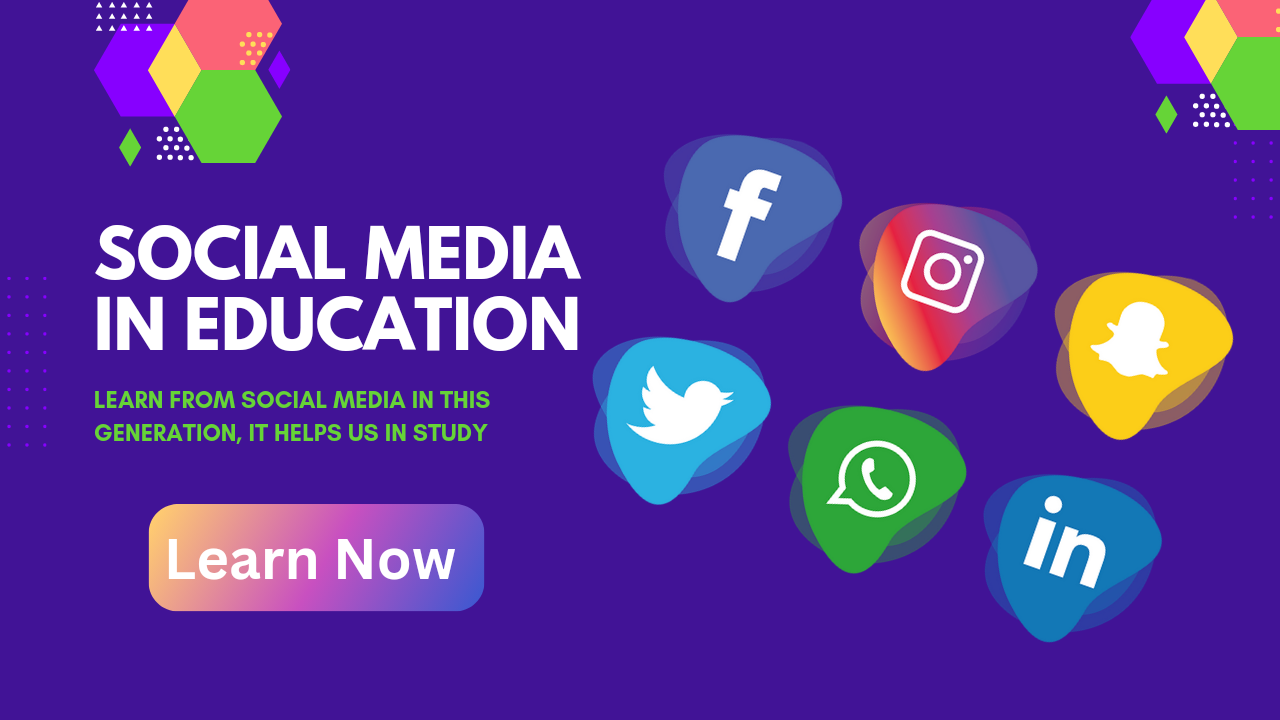Social Media in Education

Social Media in Education: A New Era of Collaborative Learning
Social media platforms have become an essential part of our daily lives. We use them to connect with friends and family, share photos and videos, and stay up to date on news and current events. But social media is not just for personal use. It has also become an increasingly popular tool for education (social media in Education). In this blog post, we will explore how social media can be used in education to promote collaborative learning and enhance the student experience.
Connecting Students and Teachers
Social media provides a platform for students and teachers to connect and communicate outside of the classroom. With the use of social media, teachers can post updates, announcements, and reminders about assignments and exams. Students can ask questions and receive feedback in real-time, making the learning experience more interactive and engaging.
Social media can also be used to facilitate group projects and collaborations. Students can use social media to share ideas, resources, and feedback with their peers, regardless of their physical location. This can help to foster a sense of community and promote teamwork among students.

Engaging Students with Interactive Content
Social media platforms are designed to be visually appealing and engaging. This makes them an ideal tool for educators to create interactive content that can capture the attention of their students. Teachers can use social media to share videos, images, and infographics that can help to explain complex concepts in a more digestible format.
In addition, social media can be used to host live events such as webinars, Q&A sessions, and debates. These events can be recorded and shared later, making the content accessible to students who were unable to attend live.
Promoting Critical Thinking and Digital Citizenship
Social media can also be used as a tool to promote critical thinking and digital citizenship. With the abundance of fake news and misinformation on the internet, it is essential that students are equipped with the skills to evaluate information critically and identify reliable sources. By using social media to teach students about digital citizenship, teachers can help to develop students’ critical thinking skills and ensure that they are responsible and ethical users of technology.
Social Media in Education: Facilitating Learning, Collaboration, and Networking
In recent years, social media platforms have become an increasingly popular tool for educators and students alike. Social media platforms such as Twitter, Facebook, and LinkedIn can be used to facilitate learning, collaboration, and networking in a variety of ways. Here we will explore some of the ways social media can be used in education to enhance the student experience.
Twitter
Twitter is a micro-blogging platform that allows users to share short, 280-character messages known as tweets. Twitter is a valuable tool for educators as it allows them to share resources, ideas, and news with their students and colleagues. Educators can use Twitter to post links to articles, share research findings, and discuss educational topics in real-time. Students can also use Twitter to connect with their classmates, share resources, and ask questions.
Twitter can also be used to facilitate collaboration and networking. Educators can use hashtags to connect with other educators and experts in their field, participate in Twitter chats, and join online communities. This can help to broaden their knowledge and expertise and provide new opportunities for professional development.
Facebook
Facebook is a social networking platform that allows users to connect with friends, family, and colleagues. Facebook can be used in education to create online communities where students and teachers can share resources, collaborate on projects, and discuss educational topics. Educators can create Facebook groups for their classes where they can post announcements, assignments, and other important information.
Facebook can also be used to facilitate networking and professional development. Educators can join Facebook groups for their subject area or educational level to connect with other educators and experts in their field. This can provide new opportunities for collaboration, idea sharing, and professional development.

LinkedIn
LinkedIn is a social networking platform that is designed for professionals. LinkedIn can be used in education to help students and educators connect with potential employers and build their professional networks. Educators can use LinkedIn to connect with other educators and professionals in their field, share research findings, and build their online presence.
Students can use LinkedIn to build their professional profile, connect with alumni, and search for job opportunities. LinkedIn can also be used to facilitate mentoring and career development. Students can connect with professionals in their field and ask for advice, feedback, and guidance.
Conclusion
Social media platforms such as Twitter, Facebook, and LinkedIn can be powerful tools for educators and students. By using social media to facilitate learning, collaboration, and networking, educators can enhance the student experience and prepare students for success in the digital age. However, it is important to use social media responsibly and ensure that students are aware of the risks and benefits of using social media in an educational context. With the right approach, social media can become a valuable tool for education and a catalyst for collaborative learning and networking.
Read More;



0 Comments